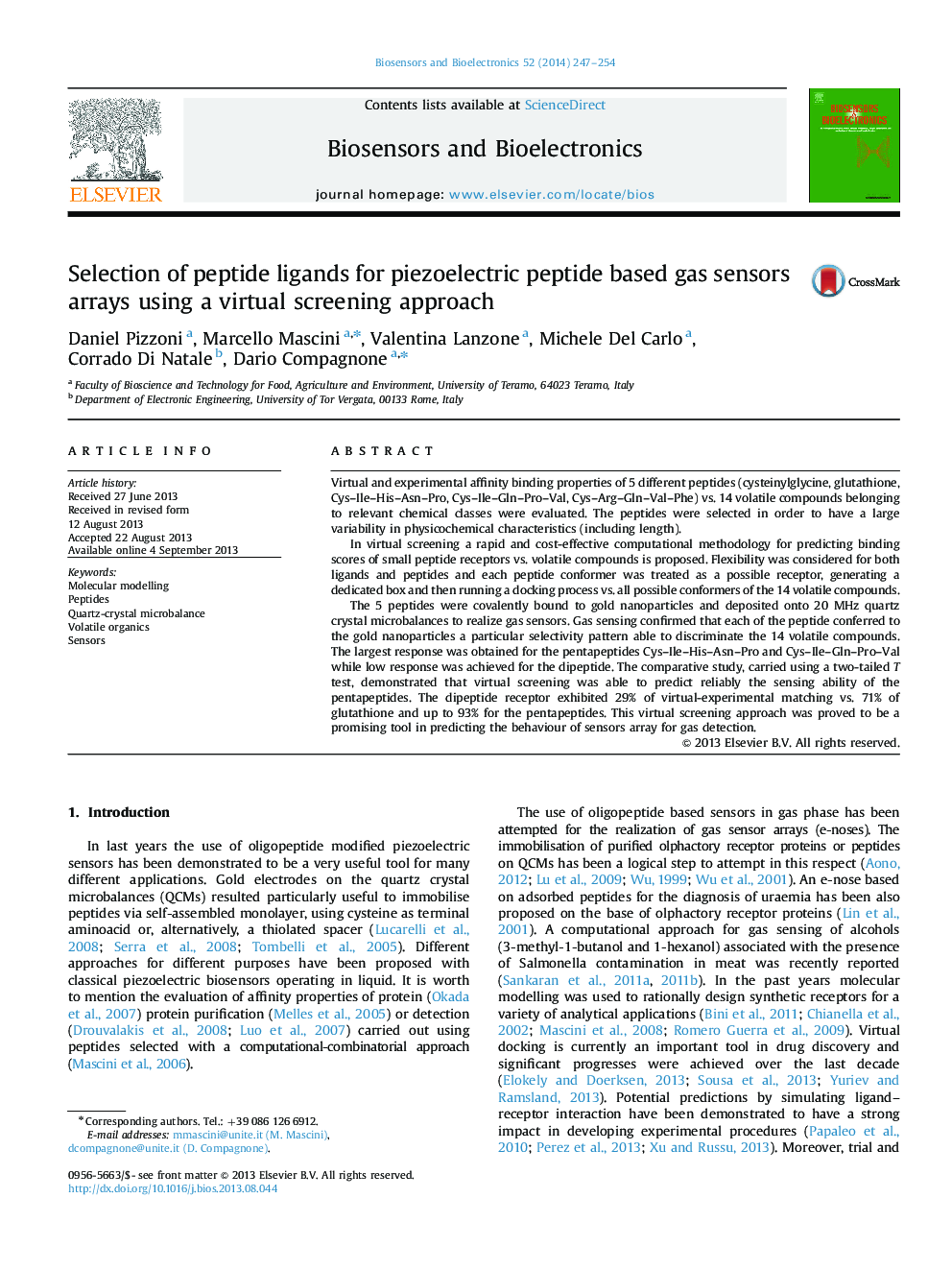| کد مقاله | کد نشریه | سال انتشار | مقاله انگلیسی | نسخه تمام متن |
|---|---|---|---|---|
| 866777 | 1470979 | 2014 | 8 صفحه PDF | دانلود رایگان |
• A virtual screening procedure for 5 different peptides vs. 14 volatile compounds was optimised.
• Experimentally, the ability of gold nanoparticles-peptides array was able to discriminate between the 14 volatile compounds.
• 93% of positive virtual-experimental matching was found for the pentapeptides.
• Molecular modelling approach was proved to be a convenient tool in predicting the behaviour of sensors array for gas detection.
Virtual and experimental affinity binding properties of 5 different peptides (cysteinylglycine, glutathione, Cys–Ile–His–Asn–Pro, Cys–Ile–Gln–Pro–Val, Cys–Arg–Gln–Val–Phe) vs. 14 volatile compounds belonging to relevant chemical classes were evaluated. The peptides were selected in order to have a large variability in physicochemical characteristics (including length).In virtual screening a rapid and cost-effective computational methodology for predicting binding scores of small peptide receptors vs. volatile compounds is proposed. Flexibility was considered for both ligands and peptides and each peptide conformer was treated as a possible receptor, generating a dedicated box and then running a docking process vs. all possible conformers of the 14 volatile compounds.The 5 peptides were covalently bound to gold nanoparticles and deposited onto 20 MHz quartz crystal microbalances to realize gas sensors. Gas sensing confirmed that each of the peptide conferred to the gold nanoparticles a particular selectivity pattern able to discriminate the 14 volatile compounds. The largest response was obtained for the pentapeptides Cys–Ile–His–Asn–Pro and Cys–Ile–Gln–Pro–Val while low response was achieved for the dipeptide. The comparative study, carried using a two-tailed T test, demonstrated that virtual screening was able to predict reliably the sensing ability of the pentapeptides. The dipeptide receptor exhibited 29% of virtual-experimental matching vs. 71% of glutathione and up to 93% for the pentapeptides. This virtual screening approach was proved to be a promising tool in predicting the behaviour of sensors array for gas detection.
Journal: Biosensors and Bioelectronics - Volume 52, 15 February 2014, Pages 247–254
